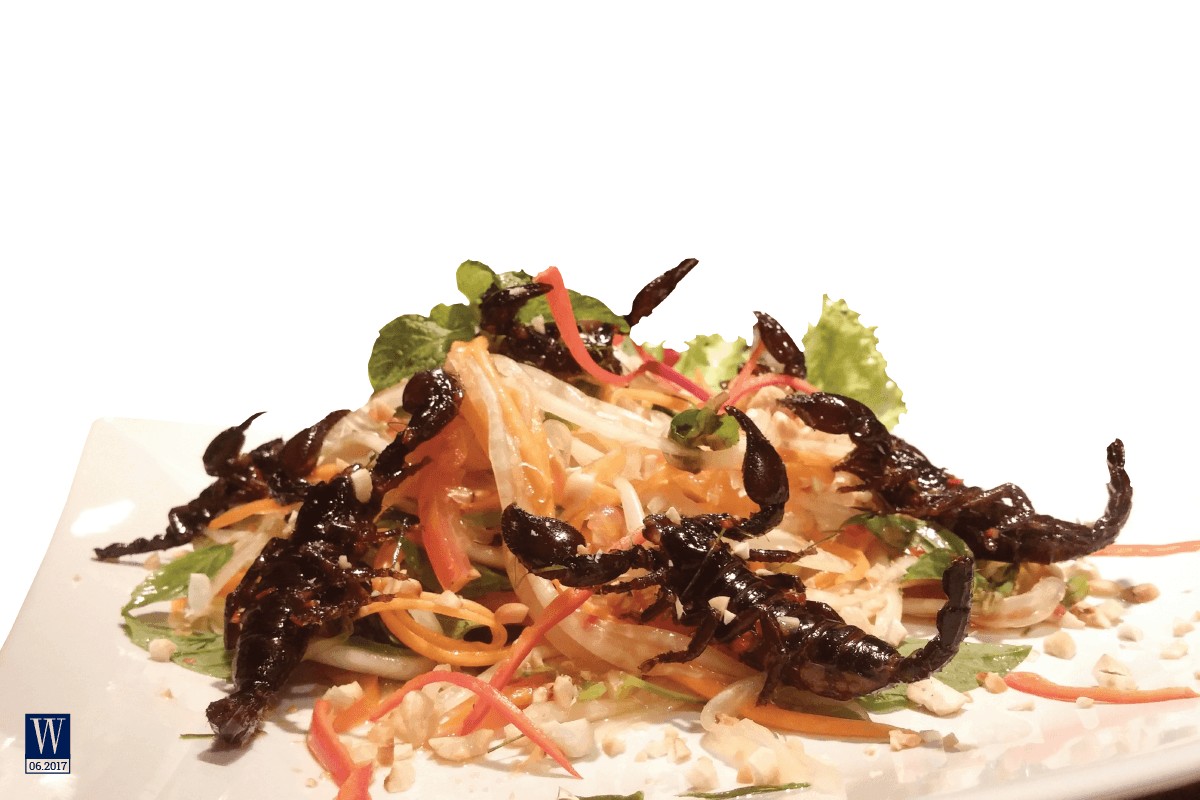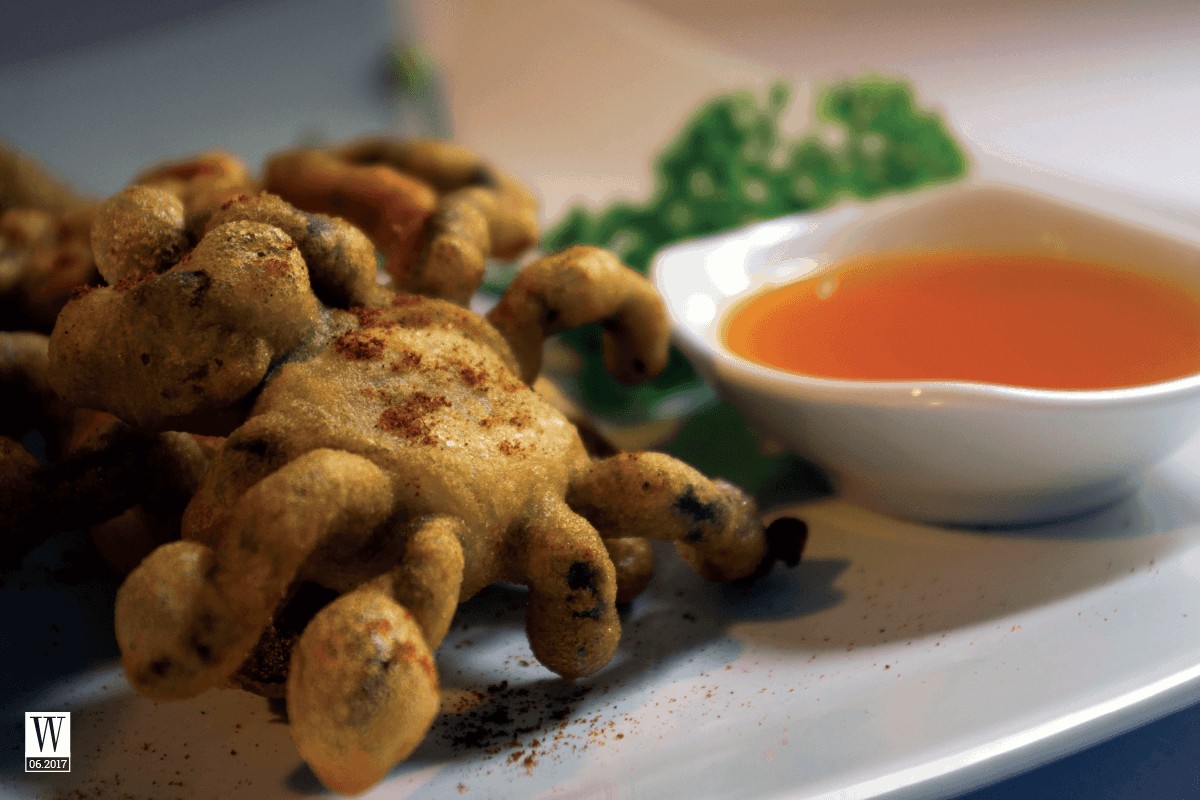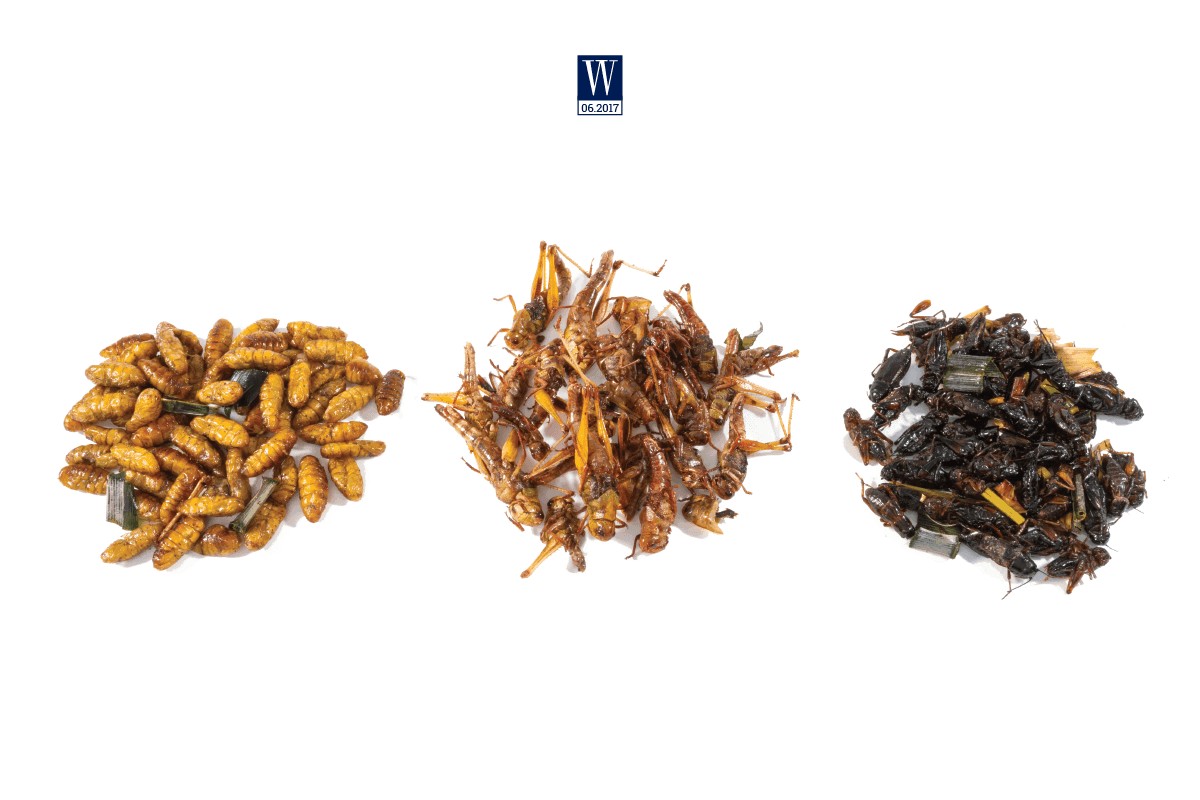For many of Vietnam’s generation born before the 80s, insect cuisine is the simple fresh food of childhood vibes flavored with unforgettable memories.
EAT INSECTS – CHALLENGE THE SENSES

Dishes made from insects always evoke in me a lot of intense childhood memories. In the past, from the beginning of April to September of the lunar calendar, when the rice was at the growing stage just about to enter the ripening phase, rural children in our countryside would prepare weapons to hunt grasshoppers. Greasy grasshoppers and locusts were brought home to be processed into a variety of dishes such as grilled or fried grasshoppers. After hunting grasshoppers, we continued to hunt crickets for cricket fighting or fried dishes and we also caught bee larvae to roast. The sweet taste of Northern cuisine featured in these fresh dishes was hard to resist.
Today, you can find countless insect dishes on the list of the world’s most … horrible dishes. In a conversation with us, Davy Blouzard, the manager of Bugs Café recommended to visitors as ‘a must-visit restaurant for insect cuisine if you come to Siem Reap, Cambodia’, laughed and shared various reactions of customers when they first enjoy tarantula tempura or salty cupcakes with crickets and worms: “It’s always a lot of fun to see the first reaction, that’s why I love my job! Our customers are culturally prepared to feel disgusted by insects, which creates an unavoidable tension when they do their best to get rid of an instinct they’ve had since they were born. It results in laughs, screaming, mutual support, and challenge… That is until they finally taste the food: they then realize that it’s absolutely neither horrible nor squishy but to the contrary as good as any other nicely prepared food. Everything becomes much easier at this point.“

Davy Blouzard’s sharing reminded me of the humorous reaction of a foreigner I witnessed trying to eat larvae coconut worms. The tall, bulky boy almost cried when he tried to put the fat wiggling larvae coconut worm into his mouth. After gathering all his courage to chew and swallow, he vowed never to try the dish again, although the taste was not bad.
Overcoming the apprehension or fright at the beginning, many foodies after closing their eyes, holding their breath, and turning off all senses to enjoy insect dishes have to admit humorously: silkworm tastes like roasted chestnuts, grasshoppers taste as shrimp and crickets smell like popcorn. The world of culinary dishes featuring insects is endless, you can eat fried scorpions but might not want wiggling larvae coconut worms. I for example am very interested in silkworm and grasshopper but cannot bring myself to try cockroach soup.
EAT INSECTS – SAVE THE WORLD

Recently, I read in the news that if humans turned to eating insects instead of trying to become superman, the earth might be saved. Accordingly, experts from The University of Edinburgh (Scotland) said that we just need to reduce half of the global meat consumption and switch to crickets or pupae; the amount of land needed for cattle breeding would be reduced to a third. In addition, large amounts of greenhouse gas emissions during cattle breeding season would also be minimized. And even if only a small part of mankind switched to eating insects, this planet would get a lot of benefits.
While we still do not know whether this kind of food will decide the survival of Earth, insects are widely predicted to be the future of the global food industry for their many practical benefits: they are nutritious, less harmful to the environment and most importantly they are delicious. Do you know that an insect contains more than 80% of protein, and also has fat, fiber, vitamins, and minerals? Compared to their weight, insects contain more iron than beef. However, you have to select, prepare and cook insects properly, if not you run the danger of getting hurt, as insect poisoning is not rare.
When it comes to taste, things are still controversial, as it depends on the preference of each person. But for most people who have the courage to try insect dishes, it is definitely a new world. Just as I was addicted to my mother’s roasted chrysalis silkworm with lemon leaf, Jack Lowell, an American tourist, did not hide his excitement when enjoying deep-fried tarantula spider in Cambodia for one dollar”It looks hideous but it is really delicious, fragrant and fleshy. The spider’s body taste better than the legs. You should enjoy this with a beer,” he said. And Nguyen Tung, a reporter working in Hanoi after enjoying flying shrimp (roasted grasshopper) in a restaurant, said: “At first, when you are afraid of chewing it thoroughly, it tastes like crispy thin shrimp, but you get acquainted with it, it tastes like chicken or frog.”
Today, more than 2,000 species of insects are processed into daily food for more than 2 billion people across the planet. You can see them in all countries, continents, from traditional to modern dishes, from expensive to cheap cuisine. In Japan, insect sushi is a very popular traditional dish. Italy’s Sardinia Island is famous for its Casu Marzu cheese. Mopane worm (feeds primarily but not exclusively on mopane tree leaves) is particularly popular in many parts of Africa. In Mexico, you can even buy a plate of fried or roasted grasshoppers at sidewalk stalls or at the gate of a circus or cinema to snack while watching a film.

But, that is a story for the distant future. For now, if you had a bowl of insect ramen or a crispy fried centipede in front of you, would you try it?
Wanderlust Tips

